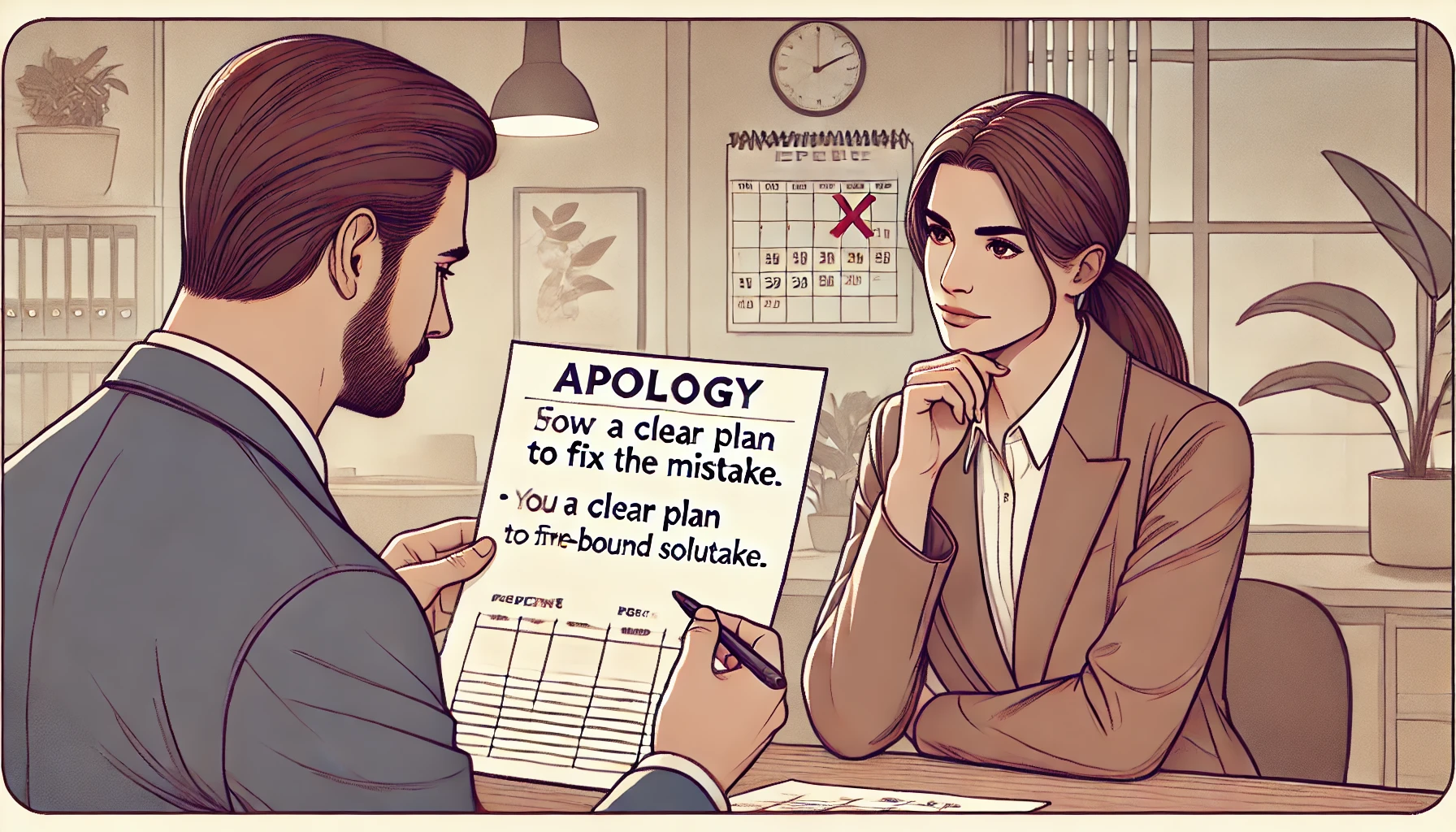Introduction:
An apology has the power to do more than just mend broken relationships. It can restore trust, heal emotional wounds, and turn conflict into an opportunity for deeper connection. Yet, the art of apologizing is often misunderstood, especially when defensiveness creeps in. The key to a sincere apology is taking full responsibility without justifications or excuses. This simple yet profound act transforms a situation from one of division to one of resolution, paving the way for genuine forgiveness.
Unfortunately, many apologies are clouded by defensive statements, which leave the person you hurt feeling unheard and invalidated. Crafting an apology that avoids defensiveness isn’t just crucial for personal relationships but also for professional settings, customer service, and conflict resolution. In this guide, we’ll explore how to apologize effectively, focusing on vulnerability, accountability, and clear communication to foster true reconciliation.
Whether you’re apologizing to a friend, family member, colleague, or customer, learning to apologize sincerely—without shifting blame—can rebuild trust and help strengthen your relationships. Let’s dive in.
Why Vulnerability and Empathy Matter in Apologies
To truly apologize is to make yourself vulnerable. Apologizing means admitting fault, accepting the consequences, and recognizing the emotional pain you’ve caused. Vulnerability signals that you’re open to reconciliation, which makes it easier for the other person to forgive you. It also shows that you value the relationship more than protecting your ego.
Empathy plays a key role as well. A sincere apology isn’t just about recognizing your actions; it’s about fully acknowledging how those actions affected the other person. When you center their experience, you validate their emotions, demonstrating genuine remorse.
“I’m sorry I said that, and I know it hurt you. I can see why you’re upset.”
This kind of apology shows both vulnerability and empathy, which are crucial to fostering genuine forgiveness.
Why Avoid Defensiveness When Apologizing?
When you’re apologizing, defensiveness is your worst enemy. It often stems from discomfort—we don’t like admitting we were wrong. But when we let defensiveness take over, it undermines the sincerity of the apology and shifts the focus away from the person you hurt.
Consider these defensive statements:
- “I’m sorry, but you misunderstood me.”
- “I wouldn’t have said that if you hadn’t done X.”
These aren’t apologies at all. They’re justifications that deflect responsibility. In order to truly apologize, you need to eliminate defensive language and focus entirely on the impact of your actions on the other person. When you put aside your ego and make an effort to truly hear and understand the other person’s feelings, you foster the empathy and humility required for real reconciliation.
How to Take Full Responsibility for Your Actions
A sincere apology begins with accepting full responsibility for the harm you caused. This means acknowledging your mistakes openly, without downplaying or deflecting them. Avoid language that suggests the other person shares the blame, or phrases that soften the apology. The more direct and honest you are, the more powerful the apology becomes.
Examples:
- Instead of saying, “I’m sorry if you felt hurt,” try:
- “I’m sorry for what I said. It was wrong, and I realize it hurt you.”
Taking responsibility means acknowledging both your actions and their emotional impact. It also includes showing a commitment to positive change. Saying something like, “I understand how I hurt you, and I’ll make sure not to repeat this,” reassures the other person that you’re dedicated to improving, which is essential for rebuilding trust.
The Power of an Unqualified Apology
An unqualified apology is one given without conditions, excuses, or justifications. Often, people qualify their apologies to soften the impact or make themselves feel better about their actions. This is where phrases like “I’m sorry, but…” or “I didn’t mean to, but…” creep in and weaken the message.
To make your apology as sincere as possible, keep it straightforward and unqualified.
- Say: “I’m sorry for what I did, it was hurtful, and I take full responsibility.”
- Avoid: “I’m sorry, but I was really stressed.”
An unqualified apology shows you’re more interested in repairing the relationship than protecting your pride. When someone hears this kind of apology, they’re more likely to feel your honesty, making it easier for them to forgive.
Why Justifications Undermine an Apology
While it’s natural to want to explain your actions, offering justifications during an apology can come across as minimizing the other person’s feelings. It can make it seem like you’re more interested in explaining yourself than fully owning the harm you caused.
For example, saying “I was really stressed when I said that,” might feel like you’re providing context, but it shifts the focus away from the other person’s pain and places it on your own experience. A better approach is:
- “What I said was wrong, and I’m sorry for the hurt it caused. That’s what matters here.”
This response focuses solely on the other person’s feelings and demonstrates that you value their emotional experience above your need to justify your actions.
Apologizing in Professional Settings
In professional contexts, apologizing without defensiveness is critical, especially when it comes to maintaining trust with colleagues or clients. The same principles apply, but there’s often a greater need for professionalism and clarity.
For example, if a project deadline is missed, saying “I’m sorry for the delay, but we had some internal issues,” shifts the blame and risks frustrating the client further. Instead, a more responsible apology would be:
- “We apologize for the delay and understand how it has affected you. We’re committed to making it right.”
In a professional setting, a sincere apology helps de-escalate tension, maintain your reputation for accountability, and demonstrate a focus on solutions. It’s also a way to reinforce your professionalism and integrity, showing that you’re someone who takes ownership of mistakes rather than deflecting blame.
How to Craft a Genuine Apology: Step-by-Step
- Acknowledge the Mistake: Clearly state what you did wrong. Avoid vague language like “Sorry for everything.” Be specific about your actions.
- Take Responsibility: Use “I” statements to show ownership of your actions. Don’t shift blame or minimize your role.
- Express Genuine Regret: Apologize sincerely for the hurt or damage caused, not just for the situation.
- Avoid Justifications: Don’t offer excuses or reasons for your behavior. Focus solely on the other person’s feelings.
- Offer Reparation: Explain how you’ll make it right or how you’ll ensure it won’t happen again.
Searchable Questions
- Why should I avoid defensiveness in an apology?
- What’s the best way to apologize without shifting blame?
- How do you apologize professionally without being defensive?
- What’s the difference between a justified apology and a real apology?
- How do you apologize effectively and foster forgiveness?
Conclusion: Foster Forgiveness Through Responsibility and Empathy
Crafting a sincere apology isn’t just about choosing the right words—it’s about making yourself vulnerable, taking full responsibility, and expressing genuine remorse. Apologies should be free of justifications and excuses, focusing instead on humility, empathy, and a commitment to change.
Whether in personal relationships or professional settings, following these principles can help you foster genuine forgiveness and rebuild trust. Apologizing sincerely is an act of courage and vulnerability, but when done correctly, it can strengthen relationships, restore trust, and pave the way for reconciliation.
Finish every apology with an open heart, and you’ll open the door to true forgiveness.


